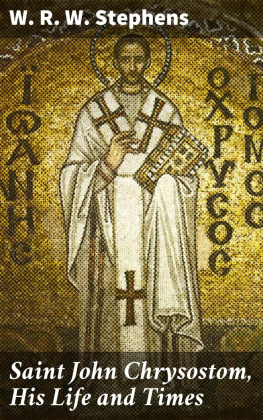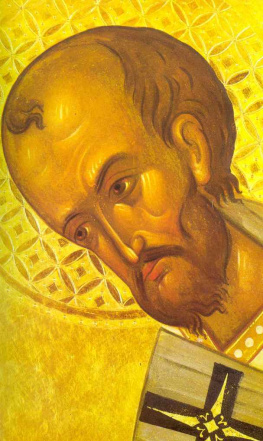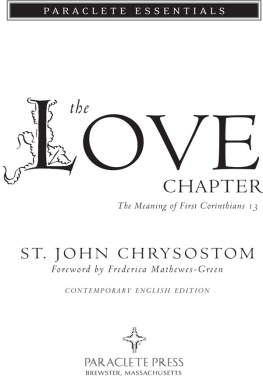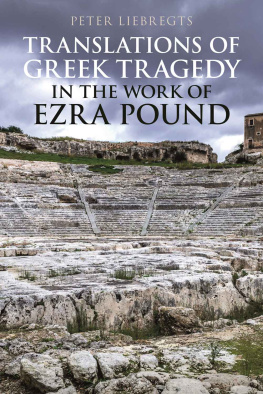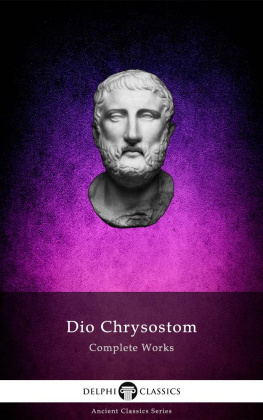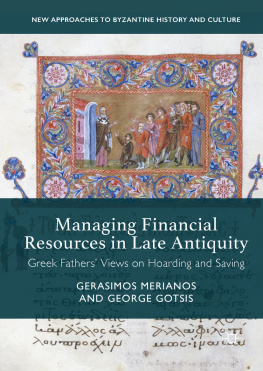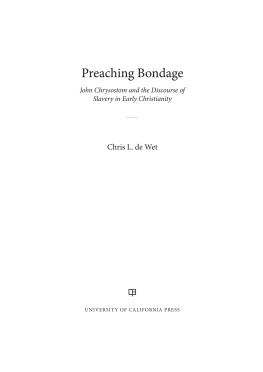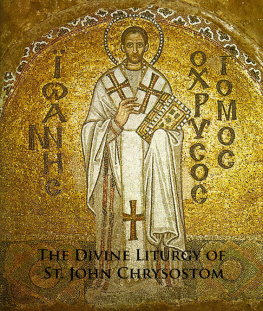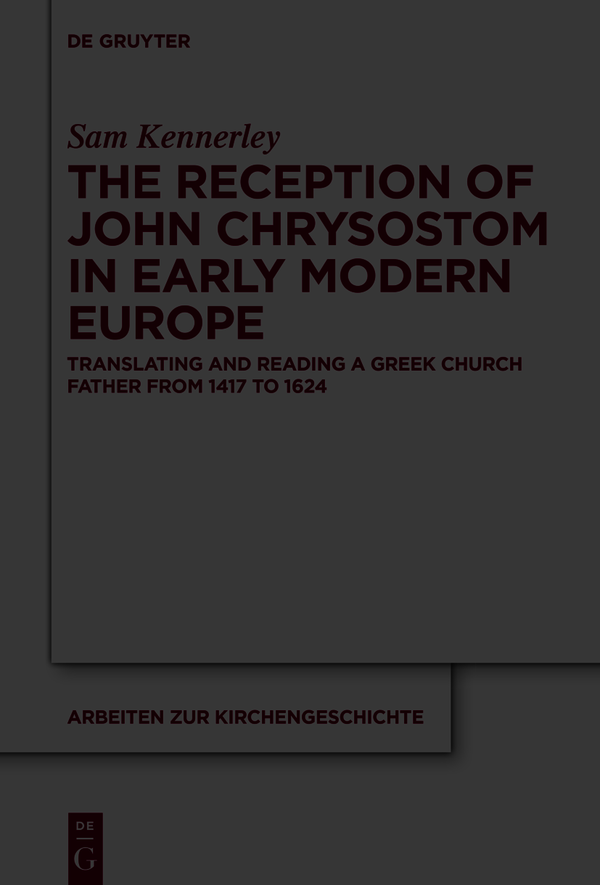Arbeiten zur Kirchengeschichte
Edited by
Karl Holl
Hans Lietzmann
Christian Albrecht
Christoph Markschies
Christopher Ocker
Volume
ISBN 9783110708844
e-ISBN (PDF) 9783110708905
e-ISBN (EPUB) 9783110708967
Bibliographic information published by the Deutsche Nationalbibliothek
The Deutsche Nationalbibliothek lists this publication in the Deutsche Nationalbibliografie; detailed bibliographic data are available on the Internet at http://dnb.dnb.de.
2023 Walter de Gruyter GmbH, Berlin/Boston
To my teachers
Tim Greenwood
Emily Michelson
Vicky Janssens
Scott Mandelbrote
Roberto Carfagni
Pedro Emilio Rivera Daz
Magistris Academiae Vivarii Novi
Abbreviations
Allen,
Opus epistolarumErasmus, Desiderius. Opus epistolarum, edited by Percy S. Allen, Helen M. Allen, and Heathcote W. Garrod. Oxford: Clarendon Press, 19061958. Citation by the number of the letter in this edition.
Barb.lat.
Biblioteca Apostolica Vaticana, Barb.lat.
BnF
Paris: Bibliothque nationale de France
BuAStaehelin, Ernst, ed. Briefe und Akten zum Leben Oekolampads. Leipzig: M. Heinsius Nachfolger, 19271934.
CCFlorence: Archivio di Stato, Carte Cerviniane
CCGCodices Chrysostomici graeci (Paris: Les ditions du CERF, 1968-)
ContemporariesBietenholz, Peter G. and Thomas D. Deutscher, eds. Contemporaries of Erasmus. Toronto: University of Toronto Press, 19851987.
CTConcilium Tridentium. Diariorum, Actorum, Epistularum, Tractatuum noua collectio. Freiburg-im-Breisgau: Herder, 19012001.
CWECollected Works of Erasmus (Toronto: University of Toronto Press, 1974-)
D&SConcilium Florentinum, documenta et scriptores. Rome: Pontificium Institutum Orientalium Studiorum, 19401977.
ILIBujanda, Jos M. et al. Index des livres interdits. Sherbrooke: Centre dtudes de la Renaissance, 19842002.
Monac.gr.
Munich: Bayerische Staatsbibliothek, Cod.graec.
PGPatrologia graeca (Paris: Migne, 18571866)
PLPatrologia latina (Paris: Migne, 18411865)
Pal.gr.
Biblioteca Apostolica Vaticana, Pal.gr.
Reg.lat.
Biblioteca Apostolica Vaticana, Reg.lat.
SCSources chrtiennes
Urb.gr.
Biblioteca Apostolica Vaticana, Urb.gr.
Urb.lat.
Biblioteca Apostolica Vaticana, Urb.lat.
USTC
Universal Short Title Catalogue, accessible online at https://www.ustc.ac.uk/
Vat.gr.
Biblioteca Apostolica Vaticana, Vat.gr.
Vat.lat.
Biblioteca Apostolica Vaticana, Vat.lat.
Part 1: Introduction
Introduction
The following book explores when, how, why, and by whom one of the most influential Fathers of the Greek Church was translated and read at a particularly significant moment in the reception of his works. It has been written with two audiences in mind. On one hand, this book is addressed to researchers of the history and literature of late antiquity, such as editors of patristic texts and their readers. On the other, it is directed at historians of the early modern period, in particular historians of translation, ideas, and scholarship. The interests of these audiences often overlap, but their historiography and research questions are different enough to warrant treating them separately in this Introduction.
To the first, this book aims to provide an overall account of the textual transmission of works by or attributed to Chrysostom during the early modern period. I am not the first person to attempt this mammoth task. This book would have been infinitely poorer without the work of scholars from Dom Morin to Wendy Mayer, who have examined specific aspects of the reception of Chrysostom using early modern sources. However, the go-to study for a general account of the transmission of Chrysostoms works is still Baurs S. Jean Chrysostome et ses oeuvres dans la histoire littraire, which was first published in 1907. Reference works that are now fundamental to patristic studies, such as the Clavis Patrum Graecorum, also appeared long after Baurs book, as did the studies of specific aspects of the reception of Chrysostom that were noted above.
As a result, it is hoped that scholars of late antiquity will particularly benefit from the bibliographical information contained in this book. Such readers may find here manuscripts and editions of Chrysostom that they were previously unaware of, or whose history required elucidation. This may be especially true for Latin translations of Chrysostom that can only be found in manuscript, some of which, such as those of Ambrogio Traversari, might be of interest to modern critics due to their use of now-lost Greek manuscripts. The same audience may also wish to pay special attention to Part 3 and the Conclusion of this book, as they trace the development of the early modern editions that provide much of the Latin and Greek text of Chrysostom that we read today.
To facilitate the use of this book as a reference volume, I have keyed in the works of Chrysostom to the Clavis Patrum Graecorum (CPG), and editions to the online database the Universal Short Title Catalogue (USTC). Paolo Sachet is creating a online database dedicated to the reception of the Church Fathers (AGAPE) which will collect and describe patristic editions printed between 1450 and 1600, but I have not otherwise referred to this resource as it had yet to be launched when I completed work on this book. No equivalent database exists for manuscripts of the Church Fathers, whose shelfmarks I have however cited in full, or shortened in the manner described in the Abbreviations page above. By referring to the indices of this book, a reader interested in a particular text should therefore be able to gain a sense of its transmission between the fifteenth and the seventeenth century, or at the very least to find the early modern manuscripts and editions that would allow them to acquire that sense themselves.
The bibliographical side of this book answers the questions when and by whom. But researchers of the history and literature of late antiquity may also be interested in how and why certain texts of Chrysostom were translated and read between 1417 and 1624, topics that I expect to be of most significance to historians of the early modern period as well. Explaining how I have addressed these questions requires a closer study of the contents of this book.
The first Chapter of Part 2 of this book offers a rapid overview of the transmission of Chrysostoms works in Latin and Greek during late antiquity and the Middle Ages, before our analysis moves on to the translation and reading of this Church Father from the fifteenth to the early sixteenth century. Chapter 2 studies the first translator of Chrysostom into Latin during the fifteenth-century, Ambrogio Traversari, tracing his translations of Chrysostom back to his monastic vocation and papal legislation about the Jews. An attempt to identify Traversaris Greek exemplar for his version of many of Chrysostoms homilies of Paul is followed by a study of his knowledge of patristic scholarship in the Byzantine Empire, not least during his attendance at the Council of Ferrara-Florence, where Greek and Latin prelates met to discuss a union of the Churches between June 1438 and July 1439. The debates at this council take centre stage for the third chapter of Part 2, which finds that they show a meaningful exchange of patristic scholarship between Greeks and Latins, in particular over patristic consensus, and Chrysostoms status as the authoritative interpreter of Paul. This third chapter concludes by exploring how pro-unionist writers such as Mammas, Plousiadenos, and Bessarion sought to convince their Byzantine readers that Rome, not Constantinople, was the true heir to the Church of Greek Fathers like Chrysostom.


